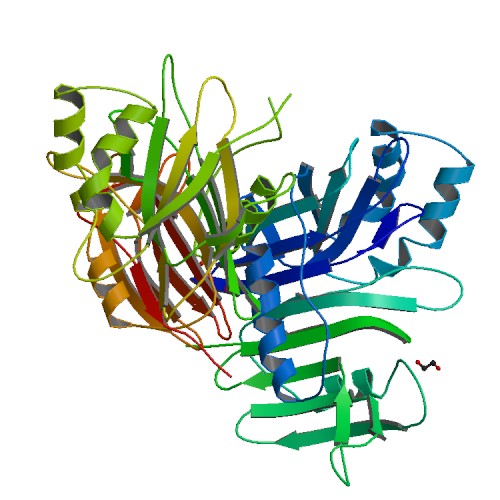News
Scientific manipulations, a basis of the future GMO/NGT law?
The European Commission is proposing that, in the future, there should be two categories of GMOs/NGTs. Those in category 1 would be exempt from risk assessment, traceability and labeling. Behind the misleading display of a limit of twenty genetic modifications for this category 1, these GMOs/NGTs could in fact have undergone an infinite number. What’s more, this number of twenty has no scientific basis whatsoever. It is the result of a purely political decision designed to restrict category 2, which is still somewhat regulated.

The European Commission claims that its proposal for deregulation, which it put forward on July 5 2023, does not concern all GMOs but only “plants produced by targeted mutagenesis and cisgenesis” [1]. Copa-Cogeca publicly comments on the proposal, welcoming “the fact that the Commission’s proposal plans exemptions from EU GMO legislation for certain specific NBTs and for Category 1 NGT plants and products derived therefrom” [2]. This rhetoric is intended to be reassuring, suggesting that the proposed end of risk assessment, traceability and labelling will not affect all GM plants. But this is not what the proposed regulation currently under discussion in the European institutions actually says.
20 genetic modifications = 400 genetic modifications !
The European Commission is proposing that GMOs obtained through new techniques of genetic modification should no longer be defined as GMOs, but as NGTs (for new genomic techniques). They would be classified into two categories according to the nature of the genetic modifications introduced. The second category is defined by the Commission as plants not belonging to the first category. Only the latter is subject to a definition that is surprising, to say the least.
The Commission proposes to classify in this category 1 any plant “that fulfils the criteria of equivalence to conventional plants, set out in Annex I,” [3]. This annex therefore establishes these equivalence criteria. Thus, for the Commission, “a NGT plant is considered equivalent to conventional plants when it differs from the recipient/parental plant by no more than 20 genetic modifications of the types referred to in points 1 to 5”. On October 26, 2023, during a debate at the European Parliament organized by MEP Christophe Clergeau, the Commission explained that for some players, this number of twenty was too large, while for others it was too small [4]. The European Commission thus admits that its choice is political and not scientific.
This number of twenty genetic modifications is in fact particularly misleading. The Commission itself defines a genetic modification as being, for example, a “substitution or insertion of no more than 20 nucleotides;” [5]. Twenty genetic modifications can therefore be increased to 400 if each genetic modification is a “substitution […] of […] 20 nucleotides”. Moreover, a “deletion of any number of nucleotides” would constitute only one type of these twenty genetic modifications [6]. Following strictly the Commission’s reasoning, a plant from which half of the genome has been removed would therefore be considered a NGT category 1 by the European Commission, and marketable without risk assessment.
It should be remembered that these twenty genetic modifications (or 400!) only concern those that will be claimed by the breeder. The regulations do not provide for any verification, other than administrative, of the existence of unintentional and above all undeclared modifications.
A little-known concept to go from 400 to… 2 400 !
In the aforementioned document, Copa-Cogeca comments on the European Commission’s proposal, writing that for category 1 NGT plants, “the 20 genetic mutations should be based on the haploid genome”. Using a little-known scientific term, haploid, this position could go unnoticed, even though its consequences are far-reaching. It is indeed important, since Spain – which is also proposing a grammatical change with far-reaching consequences (see box below) – has taken it on board in its latest proposal to member states, according to information from Politico [7].
As drafted, the Commission’s proposal implies that the number of genetic modifications authorized to be in category 1 applies to the whole plant, and therefore to its entire genome. But when we speak of a genome, we’re talking about a DNA molecule made up of different genetic sequences. These sequences may be present in a single copy, as in micro-organisms for example. This is known as a haploid genome. They may be present in two copies, as in humans for example. This is known as a diploid genome. They can also be present in six copies, as in wheat. These are known as hexaploid genomes.
When Copa-Cogeca and Spain propose that the number of genetic modifications authorized in category 1 should be based “on the haploid genome” (or monoploid genome), they are simply proposing that this number can be mathematically multiplied by the number of genome copies present. For a diploid plant, the 400 mutations seen above would then become 800. For wheat, which has six copies of each genetic sequence, the 400 mutations would become 6*400 = 2,400 mutations! In the case of sugarcane, this could be multiplied by 10 or even 12.
Let’s reread the Commission: the 2,400 for wheat would in fact be… infinite!
As we have already seen, Article 3 of the Commission’s proposal states that a plant would be defined as NGT 1 if it “fulfils the criteria of equivalence to conventional plants, set out in Annex I”. But it also specifies that this category 1 classification would also concern “progeny of the NGT plant(s) referred to in point (a) [Editor’s note: category 1)], including progeny derived by crossing of such plants”. Crossing an NGT category 1 parent plant with an NGT category 1 parent plant would give the Commission an NGT category 1 daughter plant. If each of the parent plants has the 2,400 mutations seen for the wheat in the previous paragraph, the category 1 daughter plant will contain 4,800 mutations. Crossing this daughter plant with another daughter plant with 4,800 mutations will produce plants with 9,600 mutations (maximum), and so on. These plants are GMOs in their own right.
With its proposal on GMOs/NGTs and the end of authorizations and other risk assessments, things should be simple for multinationals. It would become legally possible to knock on Spain’s door, for example, with a simple dossier: the conduct of a field trial of a wheat declared category 1 according to the criterion of a maximum of 20 genetic modifications, but in reality with 9,600 mutations (or 19.200, 38.400 mutations…). Spain’s probable approval, which will merely verify the dossier, will then be valid not only for the conduct of the field trial, but also for any subsequent marketing in the European Union. All this, without any formal authorization, risk assessment, traceability or labeling. And why? Because this wheat, with its thousands of mutations, would be legally considered as “equivalent to a conventional plant”, and therefore without any additional risks, and, above all, indistinguishable…
Breeder’s gene pool or Breeders’ gene pool
Another way of extending the number of GMOs declared Category 1 NGTs is about sequence insertions. The European Commission has proposed that a genetic modification could also be a “targeted insertion of a contiguous DNA sequence existing in the breeder’s gene pool”. In the text made public by Politico, Spain proposes to amend this sentence to read “insertion of a continuous DNA sequence existing in the breeder’s genetic pool” [8]. The proposed disappearance of the term “targeted” would mean that sequence insertions would no longer have to be in a specific place in the genome. A significant leeway for companies…
More important, Spain proposes to make reference to the fact that the inserted sequences considered to give a category 1 NGT plant could no longer come from the pool of genes of “the breeder” who submits a dossier, but from the one of “the breeders”. In this way, any company could take advantage of the presence of a given sequence in the gene pool of all breeders, and not just its own. The “catalogue” of insertable sequences therefore becomes much larger!
[1] European Commission, “Frequently asked questions: proposal on new genomic techniques”, question no. 4, July 5 2023.
[2] Translation by Inf’OGM – Copa-Cogeca, “Concerning the Commission’s proposal on plants obtained through certain new genomic techniques and food and feed derived therefrom, and amending Regulation (EU) 2017/625”, October 16, 2023
[3] European Commission, Article 3 of the “Proposal for a Regulation of the European Parliament and of the Council on plants obtained by certain new genomic techniques and their food and feed, and amending Regulation (EU) 2017/625”, July 5, 2023.
[4] Christophe Clergeau, “Nouveaux OGM – connaissance scientifique, que sait-on?” (talks are in english), October 26, 2023.
[7] “Politico Pro Morning Agriculture and food”, Politico, November 20, 2023
[8] Ibid.












